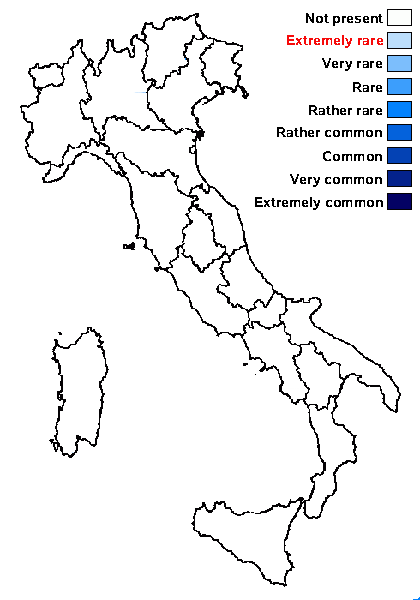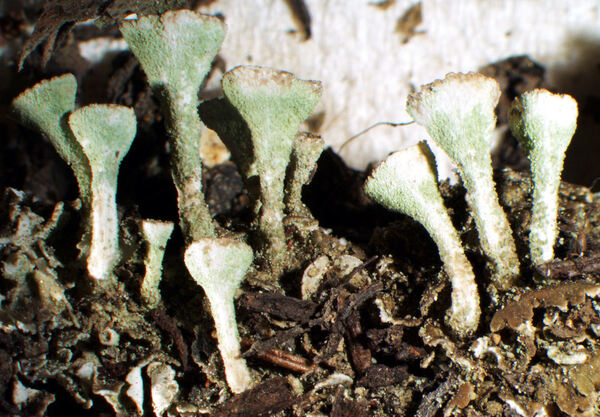Cladonia homosekikaica Nuno
J. Jap. Bot., 50: 294, 1975
Synonyms:
Distribution:
Description: Primary thallus squamulose, persistent or evanescent, the squamules 1-1.5 mm long and wide, with entire or slightly crenulate margins, olive green above, white beneath. Podetia goblet-shaped, hollow inside, scattered or in groups, 7-15(-25) mm tall, 3-5 mm wide, greyish green to dark greenish brown, often squamulose at base, the cups with irregular, smooth to toothed to rarely proliferating margins. Podetial surface usually corticate, rarely partly ecorticate, with diffuse to scattered soralia, the soredia farinose to granular, 20-80 μm in diam. Apothecia uncommon, mostly located along the margins of cups, sometimes substipitate, dark brown. Asci 8-spored, clavate, thickened at apex, with a K/I+ blue tholus and a K/I+ strongly blue outer gelatinous sheath, Cladonia-type. Ascospores 1-celled, hyaline, ellipsoid. Pycnidia frequent, mostly along the margins of cups, with a colourless jelly. Conidia hyaline, curved. Photobiont chlorococcoid. Spot tests: K-, C-, KC-, P+ red or P-, UV+ white. Chemistry: homosekikaic and sekikaic acids, sometimes fumarprotocetraric acid complex.Note: a mainly northern species, found on bare, mostly acid soil in exposed situations. Apparently rare in Southern Europe, but with several records from the Mediterranean mountains, from Spain to Greece. To be looked for in Italy.
Growth form: Fruticose
Substrata: soil, terricolous mosses, and plant debris
Photobiont: green algae other than Trentepohlia
Reproductive strategy: mainly asexual, by soredia, or soredia-like structures (e.g. blastidia)
Poorly known taxon in need of further study

Predictive model
Growth form: Fruticose
Substrata: soil, terricolous mosses, and plant debris
Photobiont: green algae other than Trentepohlia
Reproductive strategy: mainly asexual, by soredia, or soredia-like structures (e.g. blastidia)
Poorly known taxon in need of further study

Predictive model
 INDEX FUNGORUM
INDEX FUNGORUM
 GBIF
GBIF



